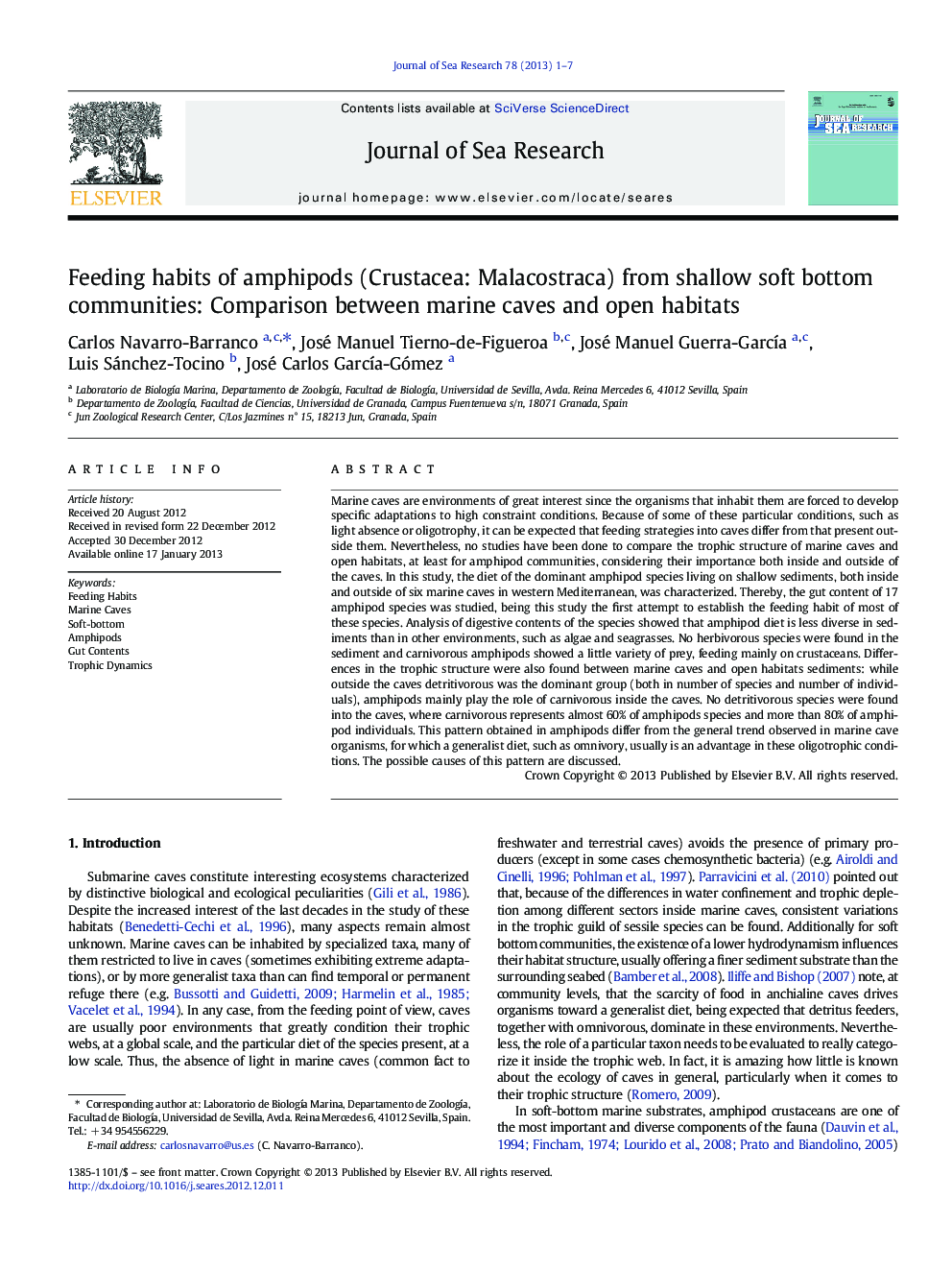| کد مقاله | کد نشریه | سال انتشار | مقاله انگلیسی | نسخه تمام متن |
|---|---|---|---|---|
| 4549949 | 1627496 | 2013 | 7 صفحه PDF | دانلود رایگان |

Marine caves are environments of great interest since the organisms that inhabit them are forced to develop specific adaptations to high constraint conditions. Because of some of these particular conditions, such as light absence or oligotrophy, it can be expected that feeding strategies into caves differ from that present outside them. Nevertheless, no studies have been done to compare the trophic structure of marine caves and open habitats, at least for amphipod communities, considering their importance both inside and outside of the caves. In this study, the diet of the dominant amphipod species living on shallow sediments, both inside and outside of six marine caves in western Mediterranean, was characterized. Thereby, the gut content of 17 amphipod species was studied, being this study the first attempt to establish the feeding habit of most of these species. Analysis of digestive contents of the species showed that amphipod diet is less diverse in sediments than in other environments, such as algae and seagrasses. No herbivorous species were found in the sediment and carnivorous amphipods showed a little variety of prey, feeding mainly on crustaceans. Differences in the trophic structure were also found between marine caves and open habitats sediments: while outside the caves detritivorous was the dominant group (both in number of species and number of individuals), amphipods mainly play the role of carnivorous inside the caves. No detritivorous species were found into the caves, where carnivorous represents almost 60% of amphipods species and more than 80% of amphipod individuals. This pattern obtained in amphipods differ from the general trend observed in marine cave organisms, for which a generalist diet, such as omnivory, usually is an advantage in these oligotrophic conditions. The possible causes of this pattern are discussed.
► The diet of dominant amphipods living on sediments in W Mediterranean is described.
► Amphipod diet is less diverse in sediment than in other studied environments.
► Outside the caves, the amphipod communities was dominated by detritivorous.
► Contrary to the general trend for cave organisms, amphipods are mainly carnivorous.
Journal: Journal of Sea Research - Volume 78, April 2013, Pages 1–7